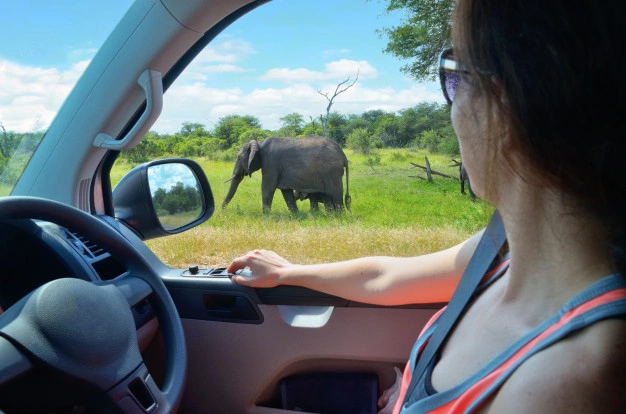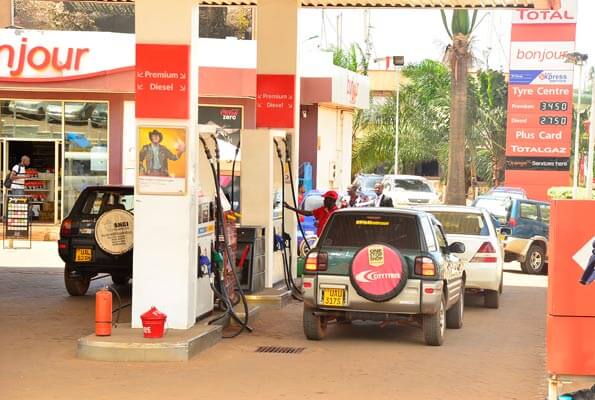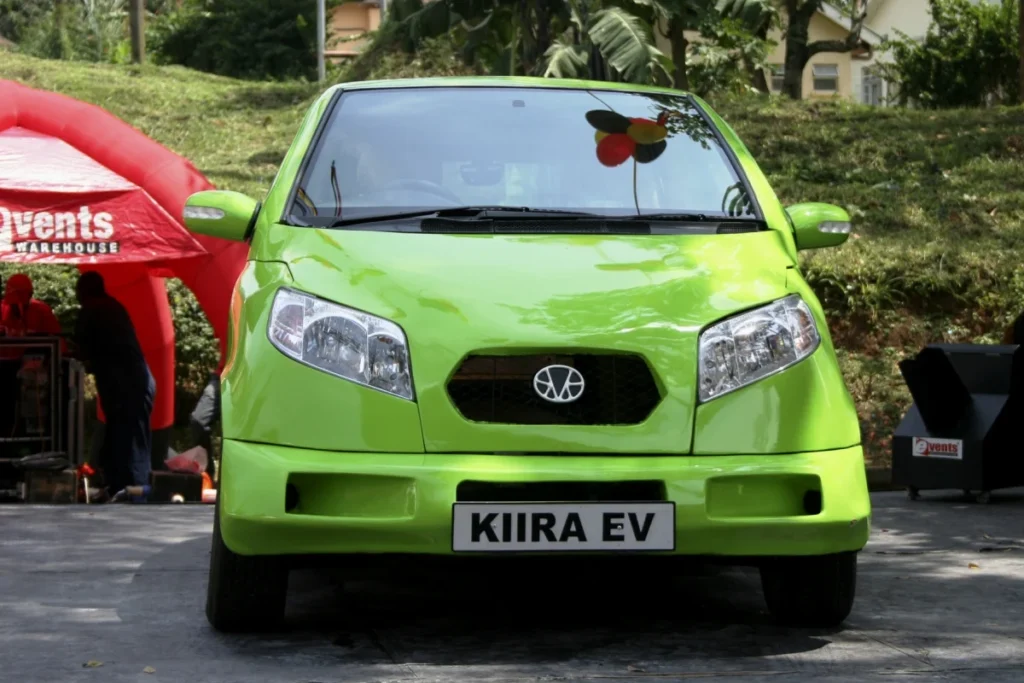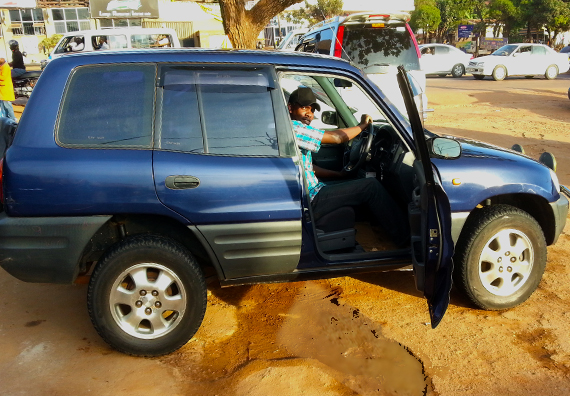
Uganda, often called the “Pearl of Africa,” boasts remarkable biodiversity, from the misty mountains sheltering endangered mountain gorillas to the vast savannahs teeming with wildlife. As tourism and urbanization increase across this East African nation, so does the environmental impact of transportation. Vehicle emissions contribute significantly to air pollution and ecological degradation, threatening the very natural treasures that make Uganda special.
This comprehensive guide explores practical eco-friendly driving practices tailored to Uganda’s unique context. Whether you’re a resident navigating Kampala’s busy streets or a visitor exploring the country’s magnificent national parks with a rental car in Uganda, these sustainable approaches help reduce your carbon footprint while potentially saving money and extending vehicle life.
Understanding Uganda’s Transportation Context
Current Transportation Landscape
Uganda’s transportation sector has expanded rapidly in recent decades, with registered vehicles increasing from approximately 52,000 in 1991 to over 1.2 million today. This growth brings significant environmental challenges:
- Air quality deterioration in urban centers, particularly Kampala
- Increased carbon emissions contributing to climate change
- Noise pollution affecting both wildlife and human communities
- Natural habitat fragmentation due to road construction
- Oil and fuel contamination of water sources
The majority of Uganda’s vehicle fleet consists of used imports, many with outdated emission control systems. Combined with variable fuel quality and limited maintenance infrastructure, these factors create a challenging environment for eco-friendly driving.
Policy Developments
The Ugandan government has begun implementing policies to address transportation sustainability:
- Gradual implementation of age limits on imported vehicles
- Development of emission standards (though enforcement remains inconsistent)
- Exploration of alternative fuel options, particularly biofuels
- Infrastructure improvements to reduce congestion
- Public transportation development initiatives
While policy frameworks continue to evolve, individual drivers can make significant positive impacts through conscious choices and driving behaviors.
Practical Eco-Friendly Driving Practices for Uganda
Vehicle Selection and Maintenance

Choose Appropriate Vehicles
The first step toward eco-friendly driving begins before purchasing or renting a car in Uganda for self drive trip:
- Right-size your vehicle: Select the smallest vehicle that meets your practical needs rather than oversized options that consume excess fuel.
- Consider fuel efficiency: Research fuel economy ratings when available; even among used vehicles, significant variation exists.
- Explore hybrid options: While still limited in Uganda, hybrid vehicles are increasingly available in the used import market, offering substantial emissions reductions.
- Investigate alternative fuels: Vehicles converted to use Liquefied Petroleum Gas (LPG) or Compressed Natural Gas (CNG) produce fewer emissions.
Maintain Vehicle Performance
Regular maintenance significantly impacts environmental performance:
- Follow service schedules: Adhere to manufacturer-recommended maintenance intervals, particularly for air filters, spark plugs, and oxygen sensors.
- Monitor tire condition: Maintain proper inflation (check weekly), alignment, and rotation to optimize fuel efficiency and extend tire life.
- Replace air filters regularly: Uganda’s dusty conditions during dry seasons necessitate more frequent air filter changes than manufacturer recommendations.
- Use quality motor oil: Select the appropriate grade as recommended by your vehicle’s manufacturer, and consider synthetic options for improved efficiency.
- Address warning lights promptly: Ignoring check engine indicators often leads to increased emissions and reduced efficiency.
Emission Control
Special attention to emission systems helps minimize environmental impact:
- Maintain catalytic converters: These vital components significantly reduce harmful emissions but require proper functioning sensors and appropriate fuel.
- Conduct regular emissions checks: While not currently mandatory throughout Uganda, voluntary testing helps identify problems early.
- Avoid tampering with emission systems: Some vehicle owners remove catalytic converters or modify emission controls; these practices significantly increase pollution.
Efficient Driving Techniques

Speed Management
Adapting driving speed substantially impacts fuel consumption and emissions:
- Observe optimal speed ranges: Most vehicles achieve maximum efficiency between 50-80 km/h; efficiency typically decreases significantly above 100 km/h.
- Maintain steady speeds: Constant acceleration and deceleration dramatically increase fuel consumption; use cruise control on highways when safe.
- Plan acceleration: Accelerate smoothly and progressively rather than aggressively; aim to reach desired speed efficiently without rapid throttle application.
Anticipatory Driving
Forward planning reduces unnecessary braking and acceleration:
- Maintain appropriate following distance: Allow 3-4 seconds between vehicles to reduce reactive braking and acceleration.
- Anticipate traffic flow: Watch for traffic light cycles, congestion patterns, and road conditions to adjust speed proactively.
- Coast when appropriate: When approaching stops or necessary slowdowns, release the accelerator early and allow momentum to carry the vehicle.
- Practice defensive driving: Being aware of surrounding traffic reduces the need for sudden maneuvers that waste fuel.
Engine Management
How you operate your vehicle’s engine significantly affects efficiency:
- Limit idling: Turn off the engine when stopped for more than 30 seconds (except in traffic); modern vehicles use minimal fuel for restart.
- Use appropriate gears: In manual transmissions, shift up at lower RPMs; in automatic vehicles, avoid aggressive acceleration that forces downshifts.
- Reduce air conditioning use: Use A/C strategically, particularly at higher speeds when open windows create drag.
- Minimize excess weight: Remove unnecessary items from the vehicle; every 50kg reduces efficiency by approximately 2%.
Route Planning and Traffic Management

Optimize Travel Routes
Thoughtful journey planning reduces unnecessary mileage and avoids congestion:
- Combine trips: Group errands and appointments to minimize total distance and cold-start emissions.
- Use navigation apps: Applications like Google Maps or Waze help identify efficient routes and avoid congestion, even accounting for real-time traffic conditions in major urban areas like Kampala, Entebbe, and Jinja.
- Consider time of travel: When possible, schedule travel outside peak congestion periods, particularly in urban centers.
- Explore alternatives: For shorter urban trips, consider walking, cycling, or using public transportation options such as taxis or boda bodas (motorcycle taxis) when appropriate.
Traffic Navigation Techniques
How you navigate traffic affects both emissions and efficiency:
- Avoid aggressive lane changes: Constant lane switching rarely saves significant time but increases fuel consumption.
- Utilize roundabouts properly: Uganda has numerous roundabouts; maintaining appropriate speed through these reduces the need to stop completely.
- Practice zipper merging: When lanes reduce, use all available road space and merge at the reduction point to keep traffic flowing smoothly.
- Be courteous: Allowing other vehicles to merge reduces stop-start patterns that increase collective emissions.
Special Considerations for Uganda
Adapting to Seasonal Conditions
Uganda’s distinct wet and dry seasons require adaptive driving approaches:
- Rainy season adjustments: Reduce speed on slippery roads rather than experiencing reduced efficiency from sudden braking or skidding.
- Dust management: During dry seasons, driving on unpaved roads at moderate speeds reduces dust particulate pollution that affects roadside communities and vegetation.
- Temperature considerations: Vehicles typically require shorter warm-up periods than many drivers realize, even during cooler highland mornings; limit idling to 30 seconds before gentle driving.
National Park and Protected Area Driving

When exploring magnificent protected areas with a rental car in Uganda, additional considerations apply:
- Observe speed limits: Beyond safety considerations, appropriate speeds reduce wildlife disturbance and dust generation.
- Stay on designated tracks: Off-road driving damages vegetation and disturbs wildlife; stick to established roads and trails.
- Minimize noise: Avoid unnecessary honking, loud music, or revving engines that disturb animal behavior.
- Turn off engines at wildlife sightings: When stopping to observe animals, switch off your vehicle to reduce emissions and noise.
Rural Community Considerations
Driving through rural communities presents unique sustainability opportunities:
- Respect pedestrian spaces: Many Ugandans travel by foot along roadways; reduce speed appropriately and give wide berth.
- Manage speed in villages: Beyond safety concerns, lower speeds reduce dust that affects homes, businesses, drying agricultural products, and community health.
- Support sustainable local initiatives: When stopping in rural communities, patronize eco-conscious businesses and accommodation options.
Fuel Quality and Selection in Uganda

Understanding Available Fuels
Fuel choice significantly impacts environmental performance:
- Petrol grades: While premium fuels (higher octane) don’t necessarily reduce emissions in most vehicles, they may improve efficiency in newer or high-performance engines.
- Diesel considerations: Modern diesel engines with proper emission controls can offer good efficiency, but older diesel vehicles without particulate filters produce significant pollution.
- Biofuel awareness: Uganda has emerging biofuel initiatives, particularly ethanol blends; these can reduce certain emissions when used in compatible vehicles.
Fuel Station Selection
Not all fuel stations maintain equal quality standards:
- Choose reputable providers: Major brands and stations with high turnover generally maintain better quality control.
- Observe fuel appearance: Clean, clear fuel without visible particles or water indicates better quality that promotes efficient combustion.
- Consider station practices: Facilities that maintain clean operations likely implement better quality control throughout their supply chain.
Community and Collective Actions

Carpooling and Ride Sharing
Shared transportation significantly reduces per-person emissions:
- Workplace carpooling: Coordinate with colleagues traveling similar routes to reduce individual vehicle use.
- Community transportation groups: Particularly in rural areas, organized community transport for market days or town visits reduces overall emissions.
- Ride-sharing apps: Services like SafeBoda and Uber connect passengers traveling similar routes, optimizing vehicle occupancy.
Supporting Sustainable Initiatives
Individual actions extend beyond personal driving habits:
- Advocate for improved public transportation: Support infrastructure development for mass transit options.
- Encourage vehicle inspection programs: Promoting mandatory emissions testing would help identify the most polluting vehicles.
- Support eco-tourism operations: Choose tour operators and accommodations with demonstrated environmental commitments.
Economic Benefits of Eco-Friendly Driving
Cost Savings
Environmental benefits align with economic advantages:
- Reduced fuel consumption: Eco-driving techniques typically reduce fuel usage by 10-15%, creating significant savings.
- Lower maintenance costs: Gentle driving reduces wear on brakes, transmission, and engine components.
- Extended vehicle lifespan: Proper maintenance and driving techniques keep vehicles operational longer, delaying replacement costs.
- Fewer traffic expenses: Better planning and driving habits reduce the likelihood of accidents and traffic violations.
Business Opportunities
Eco-friendly transportation creates entrepreneurial possibilities:
- Vehicle maintenance specialization: Mechanics focusing on emission control systems and efficiency optimization serve a growing market.
- Alternative mobility solutions: Businesses providing bicycle rentals, electric motorcycle services, or efficient public transport connections fill important niches.
- Eco-tourism transportation: Tour operators offering low-impact transportation options attract environmentally conscious visitors.
Looking Forward: Emerging Technologies and Practices

Electric Mobility Potential
While currently limited, electric transportation holds promise for Uganda:
- Electric motorcycles: Companies like Bodawerk and Zembo are pioneering electric boda bodas with solar charging infrastructure.
- Hybrid vehicle adoption: As the used vehicle market evolves, more hybrid options become available, offering significant efficiency improvements.
- Solar charging integration: Uganda’s abundant sunshine creates opportunities for solar-powered vehicle charging infrastructure.
Digital Solutions
Technology enables more efficient transportation systems:
- Traffic management applications: Digital platforms help drivers avoid congestion and optimize routes.
- Vehicle monitoring systems: Telematics solutions provide feedback on driving efficiency and vehicle performance.
- Mobility service platforms: Apps connecting transportation providers with passengers improve overall system efficiency.
Conclusion
Uganda stands at a critical juncture regarding transportation sustainability. As vehicle ownership increases and tourism grows, implementing eco-friendly driving practices becomes increasingly important for preserving the country’s natural beauty and protecting public health.
By adopting the practices outlined in this guide—from proper vehicle maintenance and efficient driving techniques to thoughtful route planning and community engagement—drivers in Uganda can significantly reduce their environmental impact while often enjoying economic benefits through reduced fuel consumption and vehicle wear.
Individual actions, when multiplied across thousands of vehicles, create meaningful positive change. As Uganda continues developing its transportation infrastructure and policies, eco-conscious drivers help establish norms and expectations that support the country’s sustainable development goals while preserving its status as the Pearl of Africa for generations to come.




More Stories
Safari Lodges in Uganda: A Gateway to Nature and Luxury
Rav4 Hire in Uganda: The Perfect Self-Drive Adventure
Uganda Car Rental Rates For Top 4×4 Cars